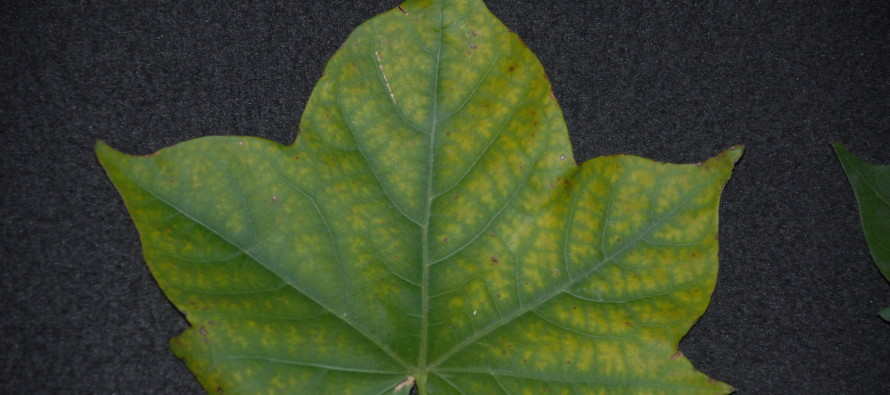Chlorotic (Yellow) Coloration in Cotton

Related Articles
- Fertilizing Cotton with Poultry Litter 5
- Spring Nitrogen Fertility Suggestions for Wheat 0
- Micronutrients for Mississippi Crop Production 4
Latest Tweets
The 4th of July is very commonly associated with blooms appearing in Mississippi cotton. Some cotton is already blooming in the state while some will certainly be after the 4th of July. As cotton begins to set squares and eventually bloom, nutrients demands begin to increase. Nutrient demand typically peaks three to four weeks after bloom after which time it begins to tail off. It is not uncommon for cotton to become somewhat chlorotic (yellow or yellowish-green) in the days and weeks following the appearance of bloom. There are several potential reasons for this outlined below.
- Nutrient deficiency – In soils that are nutrient deficient, chlorosis may be a result of this deficiency. The reason this does not appear sooner in the season is due cotton’s demand for nutrients. As previously mentioned, nutrient demands go up particularly as blooms appear. As demand goes up and the supply is not there, chlorosis is a result.
- Dry weather – Dry weather can cause nutrient deficiency to appear because if there is minimal moisture in the soil profile for the plant to take up, there are minimal nutrient uptake as well. In this situation you may have more than adequate soil test levels of nutrients; however, if there is limited moisture for the plant to take them up with chlorosis may result.
- Hard pan – if you have a hard pan and subsequent limited root growth, the pool from which the plant can pull water and nutrients becomes limited. Again, you may have adequate soil test nutrient levels; however, if there is limited water and/or root growth nutrient availability may also be limited.
- Low pH – if you have low pH soils (i.e. below 5.8) you likely have restricted root growth to some degree. Restricted root growth will limit the area from which the plant can take up water and nutrients.
- Nematodes – if you have high levels of nematodes that are limited water and nutrient uptake this can also contribute to chlorotic coloration in cotton.
When chlorotic cotton appears the question always arises about foliar feeding. In most cases, I am not a proponent of foliar feeding. In most foliar applications you are delivered 5 lbs or less of a given nutrient. For nutrients such as nitrogen or potassium, the plant needs 3-4 lbs per day at peak demand. Using those numbers, the amount applied may suffice for a day or two at best under the best case situation. However, keep in mind that not all of the applied foliar fertilizer is intercepted by the plant and what is intercepted is not all taken up. Given the cost of most foliar materials, a foliar application (or multiple foliar applications) is not cost effective in most situations.
The best cure I know of for most of the problems outlined above is a slow 1-2″ of rain or irrigation.




Let me tell You a sad story ! There are no comments yet, but You can be first one to comment this article.
Write a comment